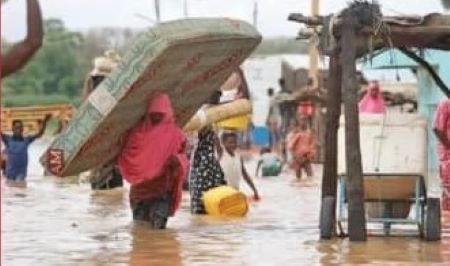Zaria has long been marked by a tragic and recurring phenomenon: flooding. The Kubanni River, which meanders through the city, has become synonymous with disaster, particularly in lowland areas such as Tudun Jukun and its surroundings. From my childhood, I have been acutely aware of the impact of these floods, which have claimed lives, destroyed property, and disrupted communities. T
The Kubanni River has a storied history, one that intertwines with the lives of Zaria’s residents. For generations, the river has been both a source of sustenance and a harbinger of danger. As urbanization took hold, the population of Zaria swelled, leading to a surge in construction near the riverbanks. This encroachment on natural floodplains has significantly increased the vulnerability of residents to flooding. The low-lying regions stretching from Tukur Tukur to Tudun Jukun, and from Magume to Kwarin Dangoma, have become particularly susceptible to the river’s wrath.
The cycle of flooding in Kubanni is one that seems relentless. Each year, the rainy season brings with it the threat of inundation, yet the community remains largely unprepared. While some floods have been mild, others have proven fatal, serving as grim reminders of the dangers that lurk close to the river. The recent tragedy, which resulted in the loss of two lives and left another child missing, underscores the severity of the issue. Fatima Sani Dan Marke and Yusuf Surajo, both students with bright futures, were swept away by floodwaters, their lives tragically cut short. The community’s grief is palpable, yet the lessons of the past seem to fade with each passing year.
Witnesses to the recent incident recounted harrowing tales of bravery and despair. A man who attempted to rescue the victims was also swept away, highlighting the unpredictable and treacherous nature of the flooding. Such incidents not only devastate families but also instill a sense of helplessness within the community. The cycle of flooding is not merely a natural disaster; it is a social crisis that demands urgent attention.
While the flooding can be partially attributed to natural causes, inadequate governmental response has exacerbated the situation. Over the years, calls for action have often gone unheeded, leaving residents to fend for themselves in the face of disaster. The lack of effective drainage systems, poor urban planning, and insufficient emergency response measures have all contributed to the cycle of flooding.
However, the responsibility does not lie solely with the authorities. The residents of Zaria, despite the risks, continue to inhabit these vulnerable zones. The allure of proximity to the river and the economic opportunities it presents often outweigh the potential dangers. This dynamic creates a complex relationship between the community and the environment, where the need for shelter and livelihood clashes with the reality of natural disasters.
As Zaria embarks on a new chapter under the leadership of Jamilu Ahmed JAGA, there is a palpable sense of hope. The election of Councillor Ismail Shuaibu, who represents the Tukur-Tukur Ward, brings with it the promise of proactive governance. With the watchful eyes of Speaker Tajudeen Abbas, there is an opportunity for meaningful change. The community is eager for solutions that prioritize safety and sustainability, including improved drainage infrastructure, better urban planning, and comprehensive disaster preparedness initiatives.
The recent tragedies have ignited a renewed sense of urgency among residents and officials alike. There is a growing recognition that the cycle of flooding cannot be broken without concerted efforts from all stakeholders. Public awareness campaigns, community engagement, and collaboration between government and citizens are essential to create a safer environment for all.
The repeated flooding in Zaria is a poignant reminder of the delicate balance between human habitation and the forces of nature. It is a cycle marked by tragedy, loss, and, hopefully, transformation. As the community grapples with the aftermath of recent events, there is a collective yearning for change. With new leadership and a commitment to addressing the root causes of flooding, Zaria stands at a crossroads. The souls of those lost to the floods, including Fatima, Yusuf, and countless others, serve as both a haunting memory and a call to action. It is imperative that the lessons of the past inform the decisions of the future, ensuring that Zaria can finally break free from the cycle of flooding and embrace a safer, more resilient tomorrow.


